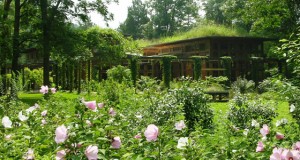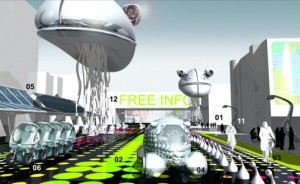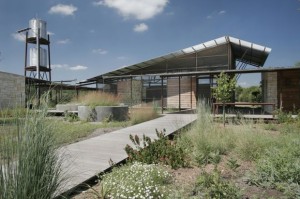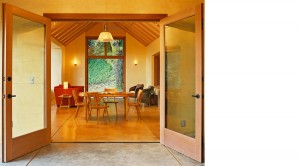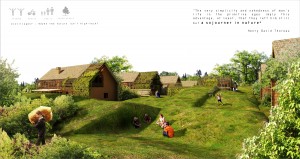Sustainable (Design) Defined | Part IV | Logics
August 19, 2013Our journey to define sustainability continues with this post, with a focus on design, architecture, and industries connected with buildings and manufacturing. As an architect I have to begin to narrow the definition to areas where I can expect to have an effect, and international politics and banking for example are not my turf. A professional and academic colleague, Martha Bohm, gave me an article to read about five years ago that changed the way I think about sustainable architecture and made sense of the competing frameworks that are put forward to guide design. It’s one thing to cite the Brundtland Commission or Triple Bottom Line as the basis of change, but quite another to anchor those calls to action in a coherent and shared values system that can sustain positive action over time. That’s because individuals (and groups) are committed to sustainability for different reasons.
Background: Professors Simon Guy and Graham Farmer studied the underlying social constructs of sustainable design as a central part of their research at NewcastleUniversity. They published an article together in 2001 in the Journal of Architectural Education (JAE) entitled Reinterpreting Sustainable Architecture: The Place of Technology. It was awarded Best Article for that academic year. A copy of the article can be found here: (Professor Guy has been at the University of Manchester since 2005 and is presently Head of the School of Environment and Development, and Director of the Manchester Architecture Research Centre.)
Guy and Farmer surveyed all available literature that referred to sustainable architecture at the time and identified six different social constructs, or logics, implicit assumptions that underlie sustainable design and theory. They have continued to explore the ideas in books and publications. While a survey in 2013 would yield a different result, I believe there are fundamental truths inherent in the categories they identified at the time that are still relevant today. As JAE noted, “Most of us drawn to the topic have assumed that there is one set of interrelated values that constitute sustainable development. These authors have, however, demonstrated the existence of six logics that are at times in fundamental conflict…”
Here then are the six, with descriptions I have taken the liberty to paraphrase and reuse language from original. I’ve also added six design images that I think represent the six logics reasonably well. A single logic tends to be dominant. Multiple logics can coexist, but some logics are by nature contradictory:
Eco-Tecnic: Engineer solutions through policy, incentive programs and codes/ metrics (e.g. LEED)/ quantify and solve / eco-efficiency/ compact transit-oriented cities as efficient organisms /modern/ high-tech/ global perspective/ cap & trade/ in PPP terms, more profit+planet
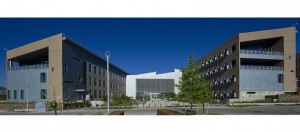
[image: NREL Research Support Facility, LEED Platinum]
Eco-Centric: Tread lightly on the earth/ harmony with nature/ environmentalism (romanticism of nature?)/ protect nature and increase biodiversity/ decentralized / limited ecological footprints/ renewable / recycled / in PPP terms, more planet than profit
[image: Bernheim Arboretum, William McDonough + Partners]
Eco-Aesthetic: envision of the future and people will be transformed/ iconic/ new age/ non-linear / consciousness-changing/ built expressions of differentness using early biophilia, biomimicry as inspiration / idea of green roof and urban agriculture/ alternative transportation/ postmodern/ architectural/ rejection of conventional building forms including vernacular?
[image: Smart Dot concept by Terraform One]
Eco-Cultural: local bioregional and cultural characteristics / authenticity / typological / based on phenomenology, cultural ecology / regional low-tech/ vernacular / opposite of international style
[image: Government Canyon Research Center, Lake Flato Architects, photo Chris Cooper]
Eco-Medical: safe healthy products/ “natural”/ healthy home movement / non-toxic materials / indoor air quality/ health product declaration / passive / tactile / quality of life
[image: Wine Creek House, Siegel & Strain Architects]
Eco-Social: flexible/ decentralized / participatory/ environmental sustainability/ social ecology/ home/ environmental sustainability can’t happen without social transformation at individual, local level first
[image: Eco-Village Wroclaw, Marcel Matusz, Wroclaw University of Technology, Faculty, Participants Favorite award from Archiprix Moscow 2013]
In a sense, my search for a universal definition of sustainable design ends here, with multiple logics that can be valid in different contexts. My approach favors a statement of design principles that can remain valid in any logic. The differences in values appear when it comes time to establish priorities and initial actions on a project. The next post will look at principles in nature.
← Sustainable Defined: Part III The Triple Bottom Line